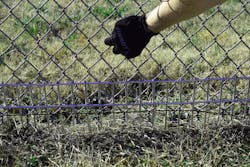When you hear the phrase, “risks of flying,” there are probably a few things that come to mind.
For most people, the slim chance of engine failure or wild turbulence is the primary concern when it comes to the safety of flying. That’s why it would surprise many people to hear that the most flight-related accidents actually occur on the runway - due to the hazard of runway incursions - and present the main source of damages to aircraft and passengers alike.
Airport Safety Facts and Figures
Safety in an airport comes in many forms. The average traveler probably thinks of security checks and baggage clearances, but safety on the tarmac is the most constant battle fought by airport staff. Near-misses on the runway, whether dodging other planes, maintenance vehicles, or animals, are estimated to occur at least three times a day in America alone. Even a minor collision with obstacles on the runway can result in a loss of life and millions in damages, so these figures are definitely a matter of concern. Infamous incidents such as the Tenerife Airport Disaster, the most deadly flight-related incident in history, illustrate the importance of airport safety protection against runway incursion.
While some incidents can be prevented by the conduct of the staff, the often-chaotic element of wildlife hazards pose a completely different kind of difficulty to airport workers. The Federal Aviation Administration states that the reported incidents of wildlife hazards in the past century have accounted for billions of dollars in damage alone. The monetary risk coupled with the sheer safety risk means that this is a high-priority issue for airports, particularly ones which are located in rural or semi-rural areas. In less developed countries, such as India, the risk of having animals stray into the runway path is a source of significant danger and concern for airport workers, causing shutdowns on an almost-annual basis.
Animal Control for Airports
The problem of how to prevent wildlife intrusion on runways is met with a variety of solutions. Many airports have barbed wire fences as a standard protection against animals and human intruders alike, but this only solves the issue of things coming over the fence. A standard chain link fence topped off with barbed wire is woefully inadequate against tunneling and burrowing animals, though. Some airports go so far as to adopt electric fences to further dissuade pests and predators from crossing into company property.
Even when used effectively, barbed wire and electric fences both pose the issue of being potentially inhumane or damaging to potential invasive wildlife. Most airports are willing to avoid maiming local wildlife if it’s not necessary, which causes many airport managers to wish for an easier, cleaner solution.
Humane Wildlife Management
When it comes to accident prevention, there are a few ideas being experimented with. Some airports experiment with complicated and expensive programs like underground radar, but even those do not fully prevent accidents. Other companies have employed ideas like systems of lasers and pressure plates in order to curb the incidence of runway incursions by foreign objects.
Other airports still favor a more straightforward solution: an American product called Dig Defence. Dig Defence (and its commercial variant, DDAC) are solutions provided by the Oklahoma-based company of the same name. Dig Defence uses a simple construction of American-made galvanized steel to prevent creatures from getting under fences without any maiming or injuring necessary. Not only is Dig Defence a humane solution for animal control on the runway, but also one that is easier and cheaper to install than the more complicated solutions offered by other companies. Originally created for residential use, these innovative barriers are created with both the animal and the customer in mind, streamlining wildlife management and improving airport safety.
When compared to more extreme protective measures like electric fences, Dig Defence provides a more practical solution, instituting systems that naturally discourage wildlife from entering by extending the protection of the already existing fence underground. The barriers are easier to maintain, more reliable, and less dangerous than similar solutions to the issue, with less cost to the end customer, such as occur with trenching and pouring concrete.
A Step Towards Safer Runways
While runway incursions are a complex issue with a variety of causes and factors, none are more preventable than the simple issue of wildlife presence on the runway. Considering that there is a lot at stake on any given runway, airport management has a strong incentive to reduce risk as much as possible. Dig Defence is a solution that is capable of excluding almost-all terrestrial animals from the dangerous operating areas on the airport at a very slight cost to the airport itself. With numerous airports already adopting this pragmatic solution to protect themselves against liability, it is likely that we'll be seeing even more follow suit
